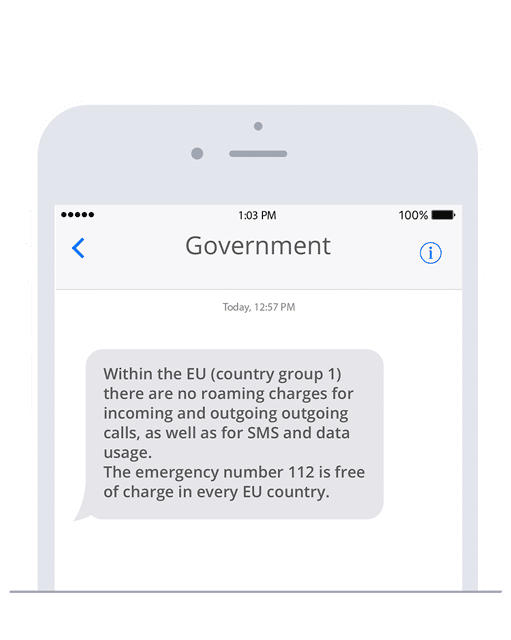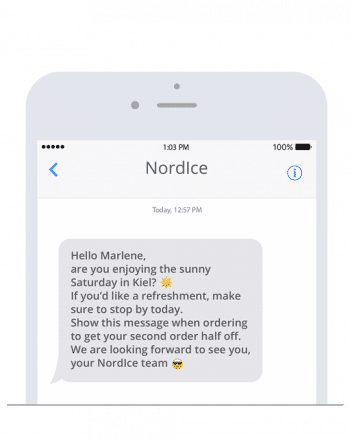In addition, locating a device is associated with effort
Theoretically, it is possible to gather information from mobile operators about which cell a certain device is located in (and thus, approximately, where it is), but in reality this is difficult. Surely you know that you are not allowed to query the location of any cell phone “just like that”. We are not aware of any provider in Germany who would offer such a query as a service for companies, even with explicit consent of the recipients.
But even in cases where the query is permitted, it would quickly become very expensive if hundreds of recipients were involved.
The bottom line is: this type of geofencing marketing is costly to implement, if it’s possible at all.
Another way to implement geofence-based SMS marketing:
Your customers download an app to track their location and then allow you to access that location there. Be careful, you should additionally obtain their consent to receive SMS. You’ll have to decide for yourself how useful it is to send SMS if your recipients have already had to download an app.
Be prepared, however, that this version might not give you the desired goals. On the one hand, the hurdle for recipients to download your app just for this purpose is big, on the other hand, this kind of location tracking often consumes a lot of battery, which is why your app might be deleted again quite quickly.


2 Comments. Leave new
I’m interested in learning more about geo-fencing. We are looking to interact with trade show attendees via SMS with updates on key speakers, giveaways, etc. and this seems like a great fit. thx.
Hi, sorry to be replying so late. As mentioned in the article, it can be hard to implement geofencing-SMS campaigns.
Not knowing your use case well, these are my thoughts:
1. Consider running a regular SMS campaign, as it is a lot easier to implement and will likely still give you all of the advantages. Let your recipients choose what they are most interested in and send the updates based on that. This makes it really transparent and efficient.
2. If you really need a geofencing solution, I’d suggest you look into services like IFTTT and Zapier and check what options they might offer in your country. Be warned that this might get difficult, even if you do end up implementing a geofencing solution: Your recipients would not only have to give you their phone number but also explicit consent (likely on their phones) that you’re allowed to track their location, they might even need to download an app for that, as mentioned in the blogpost. That’s a lot of effort and trust needed for what they’re getting.
Anyway, I hope you succeed 🙂
Make sure to reach out via support@seven.io if you have more questions on the SMS side of things!